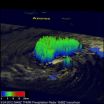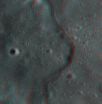(Press-News.org) Boulder, Colo., USA – The October issue of Lithosphere covers geology in Wyoming, USA; the California Coast Ranges, USA; the Alpine Fault, New Zealand; the South Atlantic seafloor; the central Himalaya in Nepal; and Sidekan, Kurdistan Region, Iraqi Zagros suture zone. Topics and methods include tectonics, orogeny, hazards, paleogeography, trigonometrics, multiple-point data analysis, LiDAR, oceanic isostasy, computer modeling, and spectroscopy.
Abstracts are online at http://lithosphere.gsapubs.org/content/current. Representatives of the media may obtain complimentary copies of LITHOSPHERE articles by contacting Kea Giles at the address above.
Please discuss articles of interest with the authors before publishing stories on their work, and please make reference to LITHOSPHERE in articles published. Contact Kea Giles for additional information or assistance.
Non-media requests for articles may be directed to GSA Sales and Service, gsaservice@geosociety.org.
The impact of vertical-axis rotations on shortening estimates
Aviva J. Sussman et al., Earth and Environmental Sciences, MS-D443, Los Alamos National Laboratory, Los Alamos, New Mexico 87545, USA. First published on 7 Aug. 2012, doi: 10.1130/L177.1
Aviva Sussman and colleagues define the components of the total displacement field, describe the diagnostic and suggestive features associated with vertical-axis rotations, and apply trigonometric map-view calculations to estimate the amount of shortening contributed by such rotations. They then apply their approach to the Wyoming salient and show that previous estimates of shortening there may contain up to 14% error.
Superimposed extension and shortening in the southern Salinas Basin and La Panza Range, California: A guide to Neogene deformation in the Salinian block of the central California Coast Ranges
Joseph P. Colgan, 345 Middlefield Road, MS 973, U.S. Geological Survey, Menlo Park, California 94025, USA. Lithosphere, October 2012, v. 4, p. 411-429, first published on August 7, 2012, doi: 10.1130/L208.1
Joseph P. Colgan and colleagues synthesized data from geologic maps, wells, seismic-reflection profiles, potential-field interpretations, and low-temperature thermochronology to refine current understanding of late Cenozoic extension and shortening in the Salinian block of the central California Coast Ranges. The central California Coast Ranges are dominated by faults of the San Andreas system, and were formed by ongoing crustal shortening in an approx. 100-km-wide zone stretching from the San Joaquin Valley to the coast across the San Andreas fault.
Scale dependence of oblique plate-boundary partitioning: New insights from LiDAR, central Alpine fault, New Zealand
Nicolas C. Barth et al., Southern Illinois University, Geology, 1249 Lincoln Dr., MC 4324, Carbondale, IL 62958, USA. Lithosphere, October 2012, v. 4, p. 435-448, doi: 10.1130/L201.1
In the past 10 years, airborne light detection and ranging (LiDAR) technology has become an effective tool for identifying active faults and assessing seismic hazards in a wide range of environments, including urban areas, grassland and scrub, and densely vegetated forests. In particular, the ability of LiDAR to image the land surface beneath thick vegetative covers at a resolution of centimeters to meters has allowed the topographic features of these landscapes to be examined in revolutionary new ways. The prospect of a 30% chance of a surface-rupturing, approx. magnitude 8 Alpine fault earthquake in the next 50 years poses a significant hazard in New Zealand, and, according to researchers Nicolas Barth and colleagues, a better understanding of surface rupturing along the Alpine fault is sorely needed. By incorporating interpretations of newly acquired LiDAR data with aerial photo interpretation and decades of previous geologic mapping, Barth and colleagues explore the significance of several orders of magnitude of shallow transpressional partitioning observed on the oblique-slip central Alpine fault and propose a new model for the geometry of structures observed at multiple scales.
Non-Pratt component of oceanic isostasy
James A. Conder, Southern Illinois University, Geology, 1249 Lincoln Dr., MC 4324, Carbondale, IL 62958, USA. First published 5 Sept. 2012, doi: 10.1130/L229.1
For the past 40 years, oceanic lithosphere has been understood to cool and subside away from mid ocean ridges to a Pratt-like isostasy condition. However, James Conder shows that in the presence of an overlying fluid, a dynamic response within the Earth's mantle is also necessary to reach equilibrium. Similar to an icecap on a continent, the addition of seawater on top of subsiding lithosphere drives a small degree of flow in the asthenosphere to accommodate the excess mass accumulated on top. The mantle flow is systematically driven from beneath younger seafloor towards older seafloor. This new understanding of seafloor subsidence means that while about two-thirds of oceanic isostasy is accommodated by Pratt isostasy, the remaining one-third must be accommodated by mantle flow.
Pulsed deformation and variable slip rates within the central Himalayan thrust belt
Delores M. Robinson, Dept. of Geological Sciences, University of Alabama, Tuscaloosa, Alabama 35487 USA; and Nadine McQuarrie. First published on 5 Sept. 2012; doi: 10.1130/L204.1
The Himalaya are the highest and most imposing mountains on the surface of the planet. Glaciers and snow cover the high Himalaya, while forests and steep ravines define the regions immediately to the south. Understanding how these mountains evolved over time gives us a fundamental connection to how they are currently growing and changing. Delores Robinson and Nadine McQuarrie use data from years of field work in remote far western Nepal in combination with computer modeling to determine the evolution of the Himalayan Mountains from 25 million years ago to the present. Because erosion constantly removes rock from the growing mountain range, documenting the rocks, structure and topography millions of years ago is daunting. However, some of these eroded rocks become stored in sedimentary basins and provide data for understanding when faults moved, rocks cooled and sediment was deposited. Robinson and McQuarrie use these data to construct models that provide an estimate for rates of erosion and deformation for seven different time frames. They concluded that averaged over millions of years, the rate of erosion was essentially constant. However, the rate of deformation varied through time. Highest rates of deformation occurred on large faults that accommodated 100-plus km of motion between the colliding Indian and Asian continents at about 16 to 25 and about 10 to 13 million years ago. Even though many researchers assume an average rate of deformation, Robinson and McQuarrie found that there are periods of time when deformation was fast and periods of time when deformation was slow.
Recognition of Late Cretaceous Hasanbag ophiolite-arc rocks in the Kurdistan Region of the Iraqi Zagros suture zone: A missing link in the paleogeography of the closing Neotethys Ocean
S.A. Ali et al., School of Earth and Environmental Sciences, University of Wollongong, Wollongong, NSW 2522, Australia. First published on 4 June 2012, doi: 10.1130/L207.1
This paper by S.A. Ali of the University of Wollongong and colleagues is (a) innovative because it provides first evidence of a "missing" Cretaceous arc assemblage in the Iraqi segment of the Zagros orogenic belt; (b) provocative because it challenges current ideas concerning Zagros evolution and anatomy; and (c) timely because there is much current literature on the neighboring Iranian segment of the Zagros orogen, whereas new information from Iraq is lacking.
www.geosociety.org
###
Contact: Kea Giles
+1-303-357-1057
kgiles@geosociety.org
October LITHOSPHERE delivered online
2012-09-26
ELSE PRESS RELEASES FROM THIS DATE:
NASA satellites see Tropical Storm Nadine 'refuse to go away'
2012-09-26
Nearly two weeks after becoming a tropical storm in the central Atlantic back on September 11th, NASA satellites confirm that Nadine is still spinning away south of the Azores as a minimal tropical storm. One of those satellites called TRMM has been providing forecasters with rainfall rates and cloud heights.
Nadine initially formed into a tropical depression from an African easterly wave that had propagated westward out into the central Atlantic from the coast of Africa. Nadine initially moved northwestward then northward before getting caught up in the westerlies over ...
Mouse pancreatic stem cells successfully differentiate into insulin producing cells
2012-09-26
Tampa, Fla. (Sep. 25, 2012) – In a study to investigate how transplanted islet cells can differentiate and mature into insulin-producing pancreatic cells, a team of Japanese researchers found that using a specific set of transcription factors (proteins that bind to specific DNA sequences) could be transduced into mouse pancreatic stem cells (mPSCs) using Sendai virus (SeV), a mouse influenza virus, as a carrier, or vector.
The study is published in a recent issue of Cell Medicine [3(1)], now freely available on-line at: http://www.ingentaconnect.com/content/cog/cm.
"Diabetes ...
NASA infrared data compares Super Typhoon Jelawat with Tropical Storm Ewiniar
2012-09-26
NASA's Aqua satellite has been obtaining infrared, visible and other data everytime it passes over Typhoon Jelawat and Tropical Storm Ewiniar in the western North Pacific, and a combination of two images from Aqua's AIRS satellite puts the storms in perspective.
A combined image created from infrared data obtained by the Atmospheric Infrared Sounder (AIRS) instrument that flies on NASA's Aqua satellite provides a comparison of the two monster storms in the western North Pacific Ocean basin . An infrared image of Typhoon Jelawat captured on Sept. 25 was combined with an ...
Category 2 Hurricane Miriam Seen in East Pacific by NASA satellite
2012-09-26
The MODIS instrument that flies aboard NASA's Aqua and Terra satellites provide some of the most clear and stunning imagery of tropical cyclones, and captured a visible image of Category 2 hurricane Miriam off the western coast of Mexico.
MODIS stands for the Moderate Resolution Imaging Spectroradiometer. Terra's MODIS and Aqua's MODIS view the entire Earth's surface every 1 to 2 days, acquiring data in 36 spectral bands, or groups of wavelengths. NASA's Aqua satellite flew over Hurricane Miriam on Sept. 24 at 21:00 UTC and the MODIS instrument captured a visible image ...
Hubble goes to the eXtreme to assemble farthest-ever view of the universe
2012-09-26
Like photographers assembling a portfolio of best shots, astronomers have assembled a new, improved portrait of mankind's deepest-ever view of the universe.
Called the eXtreme Deep Field, or XDF, the photo was assembled by combining 10 years of NASA Hubble Space Telescope photographs taken of a patch of sky at the center of the original Hubble Ultra Deep Field. The XDF is a small fraction of the angular diameter of the full moon.
The Hubble Ultra Deep Field is an image of a small area of space in the constellation Fornax, created using Hubble Space Telescope data from ...
Lunar Reconnaissance Orbiter explores the Moon in 3-D
2012-09-26
Scientists using the camera aboard NASA's Lunar Reconnaissance Orbiter are acquiring stereo images of the moon in high resolution (0.5 to 2 meters/pixel) that provide 3-D views of the surface from which high resolution topographic maps are made. The Lunar Reconnaissance Orbiter Camera Narrow Angle Camera (LROC NAC) team from the University of Arizona and Arizona State University are currently developing a processing system to automatically generate anaglyphs from most of these stereo pairs. An anaglyph is an image that can be viewed in 3-D using red-blue/green glasses.
LROC ...
Compelling evidence that brain parts evolve independently
2012-09-26
An Evolutionary Biologist at The University of Manchester, working with scientists in the United States, has found compelling evidence that parts of the brain can evolve independently from each other. It's hoped the findings will significantly advance our understanding of the brain.
The unique 15 year study with researchers at the University of Tennessee and Harvard Medical School also identified several genetic loci that control the size of different brain parts.
The aim of the research was to find out if different parts of the brain can respond independently of each ...
Inner city infants have different patterns of viral respiratory illness than infants in the suburbs
2012-09-26
Children living in low-income urban areas appear especially prone to developing asthma, possibly related to infections they acquire early in life. In a new study in The Journal of Infectious Diseases, available online, researchers from the University of Wisconsin in Madison investigated viral respiratory illnesses and their possible role in the development of asthma in urban versus suburban babies. The differences in viral illness patterns they found provide insights that could help guide the development of new asthma treatments in children.
Viral respiratory illnesses ...
PowerStone Property Management Announces Key New Hires And Promotes 3
2012-09-26
PowerStone Property Management Inc. a full service Orange County, California based property management firm, today announced that it has added several new employees and promoted 3 managers. The announcement was made by CEO Rene Decker. "We're very excited to add such a high caliber of people to our team who are attracted to PowerStone because of our solid reputation and phenomenal growth." He adds, "Every gain we make also allows us to promote from within. I'm especially pleased with the way our company culture is evolving."
New hires include Amanda ...
EVM2812 TI DSP Evaluation Board for Motion Control System
2012-09-26
EVM2812 TI DSP Evaluation Board for Motion Control System
Toronto, Canada ¨C GAO Tek Inc. (www.GAOTek.com) is offering its EVM2812 TI DSP evaluation board which has a 32-bit fixed-point Flash DSP operating at 150 MHz. This evaluation board is specially optimized for motor driving and control systems.
This EVM2812 TI DSP evaluation board, model B0M10002, is based on the MS320F2812 series DSPs. It features on-chip flash program memory, on-chip and extendable SRAM and extendable EEPROM. This module forms a complete digital servo motion control system by interfacing with ...



